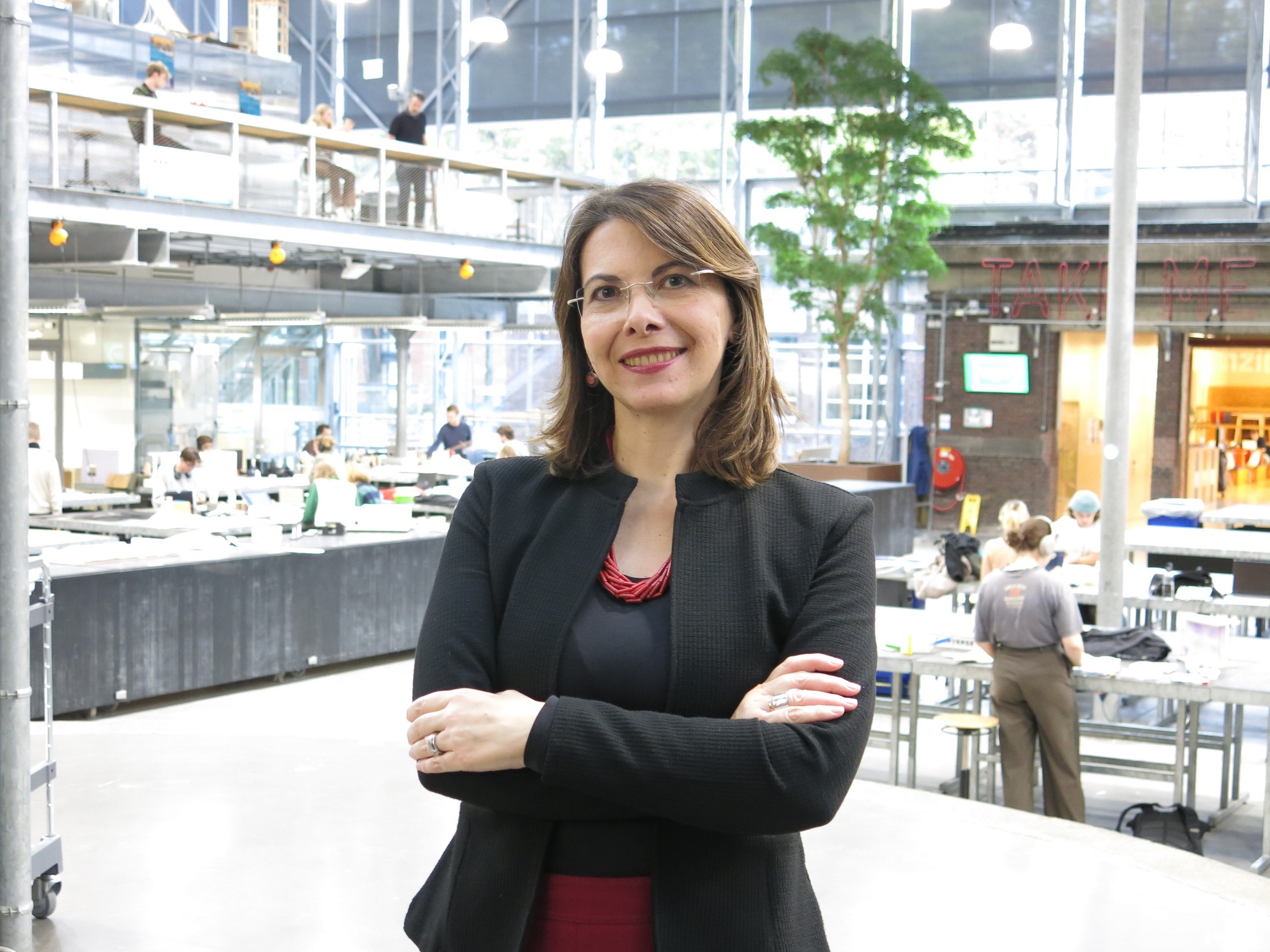From both social and environmental perspectives, collaborative living has a lot of advantages, says Associate Professor Darinka Czischke. “It makes so much sense to me.”
Darinka Czischke: “As a society, we are growing older and everyone is talking about what to do, how we are going to live with a growing population.” (Photo: Heather Montague)
English only
“I started at TU Delft as an Assistant Professor in March 2015 thanks to the Delft Technology Fellowship. It’s quite a prestigious fellowship that TU Delft gives to talented female scientists and I feel honoured to have received it. It was a big milestone because it was the first time I had a full academic position. Before that I worked in different sectors, besides academia, like the NGO sector and industry doing consulting and research in the field of housing and urban development. I really enjoyed that and it is still very much connected to my profile as an academic, this connection to society, to industry, to the world of practice.
The Fellowship gave me the start-up funding to develop my own research line which is sort of a luxury in academia today when there is so much competition for limited grant money. And having the freedom to develop research that I feel passionate about is a great opportunity. I started my own lab called Co-Lab Research. It’s a research group that brings together researchers doing work in the field of collaborative living environments, also called collaborative housing.
What we call collaborative living is a whole range of approaches and models of how a group of residents work together to provide housing by and for themselves, with a common vision of how they want to live. There’s a big element of self-organisation and self-management throughout the stages of housing production. It begins with group formation, then finding a plot, engaging with different professionals to realise the project and eventually living as a community of people. Daily management and social activities play an important role in the life of the project.
It’s fascinating to see more and more interest in these forms of living. They are not new at all; they have existed for centuries in different forms all over the world. But what researchers see now is an increased interest for different reasons. One of them is the widespread housing crisis and the fact that more and more people feel excluded from the market because they can’t afford it. There is also the shrinking of subsidised systems so people are not eligible because they are not poor enough. Particularly in Western Europe, where formerly big housing sectors are decreasing, there are a lot of people in the middle that are falling between the cracks and they are looking into alternatives.
‘During Covid, people realised that there are advantages of communal living’
There are advantages of communal living that people realised during Covid. For instance, loneliness was a big issue. We heard from a lot of elderly people who live in these projects that if it wasn’t for the fact that they were living together with others they would have been extremely isolated. Being a part of a close network of neighbours who kept an eye on each other, respecting social distance, made them more resilient. People already living in these projects came to value it even more. The challenge is to bring this way of living to the wider public. In countries like the Netherlands where this is not very widespread or well-known, it’s a challenge for those of us that believe in the potential that collaborative living can have for many societal challenges that we are facing.
Last year we hosted a knowledge programme on this topic at the Faculty of Architecture and the Built Environment called Project Together. We are currently working on a book to include the highlights of this programme. It will be published in English and in Dutch because we really want to reach a local audience here, but also make it available to people anywhere. It will be available as a physical book but it will also be downloadable for free.
Together with two other colleagues, one from France and one from Austria, in 2016 we started a working group on collaborative housing, as part of the European Network for Housing Research (ENHR). We build on each other’s work; we inspire other researchers across disciplines to also engage with this type of research so it’s been very fulfilling. I was also able to travel in Europe and I discovered that there are places where collaborative living has been going on for quite some time. I went to Scandinavia and to German speaking countries and to other countries where this is emerging like Spain. I found really inspiring examples like the second half of life model in Sweden. One housing project is centrally located in Stockholm. A municipal housing company owns the building but the residents, who are all above 55, decide how to organise their lives and the maintenance of the building. They have common areas, kitchens, a sauna, a garden, and guest rooms that they are able to use collectively. This is all part of the concept of shared living, making more efficient use of space and having a smaller footprint which connects to environmental aspects. So many things come together.
As a society, we are growing older and everyone is talking about what to do, how we are going to live with a growing population. I think it’s a no-brainer that this way of living is the future. Helping each other, keeping each other company, solidarity, mutual help, sharing. It makes total sense to me.”
Want to be featured in Humans of TU Delft? Or do you know someone with a good story to tell? Send us an e-mail at humansoftudelft@gmail.com
Heather Montague / Freelance writer



Comments are closed.